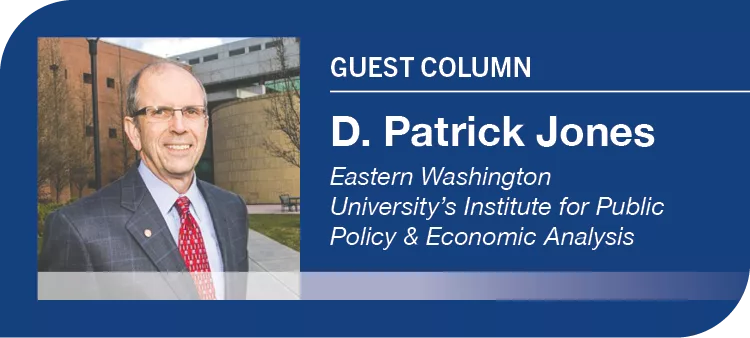
Home » The Tri-Cities’ graying population will grow over next decade
The Tri-Cities’ graying population will grow over next decade

February 12, 2021
The Tri-Cities have long been a youngster among state metro areas.
With an estimated median age of 34.5 in 2019, the two counties sport the youngest population of all, except for Yakima County. Among counties, Franklin County currently claims the title of youngest, with an estimated median age in 2019 at 30.4. But youngsters get older. A decade ago (2010), the median age in the two counties was a full two years younger.
Median age, one number that often represents the age structure of a population, can change due to many factors. The birth rate is one. People living longer is another. The departure of prime working age (25-54) adults is yet another. Further, a greater number of students enrolled in local post-secondary schools lowers the median, as college towns well know. Yet another factor is the median age of newcomers to the two counties. Some of these forces affecting the population here are measured, some not.
A quick look at some of these factors leads one to conclude that the local aging trend is probably going to continue. Life expectancy continues to climb, as the graph shows. It is unlikely that the Tri-Cities will become a college town, although the economy isn’t losing prime working age adults. We don’t know the ages of newcomers to the area. Yet we do know that over the past decade, births in the two counties have declined.
A bit more expansive view of the age distribution of the greater Tri-Cities than the median can be found in the graph. This measure breaks down the population into four age groups and tracks the shares of the groups over the past three decades. The changes are subtle but apparent. Essentially the upper half of the distribution has become more important at the expense of the younger age groups, 0-17 and 18-34.

The age group that has gained the most: the 65+ segment. Over the past decade, its share of the greater Tri-City population has climbed from 10.2% to 14%. If this growth were to continue over the next decade, nearly one fifth of the Tri-City population would be older adults by 2030. While this future would bring the two counties only to the current share of older adults in Spokane and Walla Walla, it would nonetheless signal a major shift in the makeup of the area.
The consequences of an aging population are many. Often overlooked is that those who have reached age 65 bring wealth. The latest (2019) Survey of Consumer Finances from the Federal Reserve Bank, the one reliable series on wealth in the U.S., reveals that age group 65-74 reported the highest wealth, whether median and mean, among all age groups. That is likely the case here, too.
The mix of goods and services consumed by the older adults varies from that of the general population, too. For many years the Bureau of Labor Statistics has maintained a separate consumer price index for the elderly, the CPI-E. Several departures from the market basket of the common CPI are worth mentioning for the CPI-E. The first is a much greater share is spent on medical care. Second, a greater share is allocated to housing. Third, considerably less is spent on transportation, apparel, and food consumed away from home.
The much larger share spent on medical care, both goods and services, comes as no surprise. A recent (2019) analysis by the Kaiser Family Foundation of medical expenditure data found that 36% of all U.S. health spending was taken up by older adults. One can see a local consequence in the parallel growth of the health care and social assistance sector over the past decade. As Trends data reveals, the share of the two-county labor force accounted for by this sector has grown from 8.9% to 13% since 2010. While there are several forces behind this growth, the rising presence of seniors in the greater Tri-Cities surely has been a major driver.
Perhaps one doesn’t think of housing as an area of outsized spending by older adults. But consider the backdrop: a generation who, while now downsizing, is accustomed to “trading up” in the housing market over their lifetimes. Then there’s the growing desire by boomers to age in place. Couple these preferences with greater-than-average wealth, result shouldn’t be too surprising.
On the other hand, dressing for success is no longer a motivator once retired. Similarly, the thrill or need associated with a new vehicle may not be present among older adults. And once retired, more time is available to cook at home.
In 2030 the greater Tri-Cities will hardly be gray compared to many areas in our state. But next decade will undeniably be a graying one. This change should bring opportunities to the health care sector and both opportunities and challenges to local businesses.
D. Patrick Jones is the executive director for Eastern Washington University’s Institute for Public Policy & Economic Analysis. Benton-Franklin Trends, the institute’s project, uses local, state and federal data to measure the local economic, educational and civic life of Benton and Franklin counties.
Retirement
KEYWORDS february 2021





